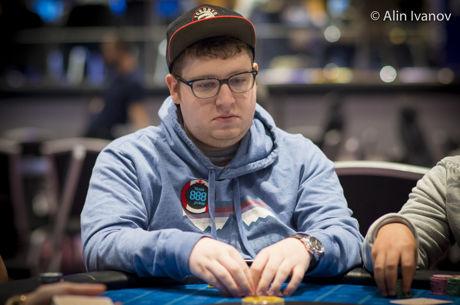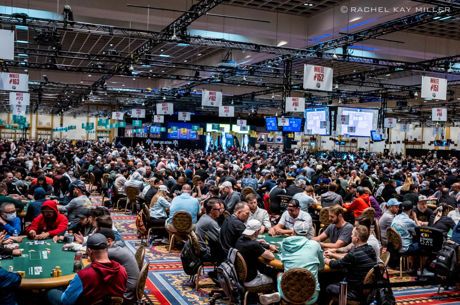888poker: Use This Overbetting Strategy to Get Max Value
Table Of Contents
Overbets are a powerful tool in No Limit Hold'em that you can use to punish your opponents, both to get value and as a bluff. How and when to use them is an important skill to master if you want to be a great poker player.
In this Made to Play tutorial from 888poker, ambassador Ian Simpson shares tips on how to apply overbetting when at the tables.
The Scenario
In the following scenario, the button opens to 120 with A♣A♠ and the big blind calls. The flop is K♣5♥4♥, the big blind check-calls a bet of 300 and the button's continuation bet. The turn is the J♠ and it is a blank card for our opponent as it doesn't really help the big blinds range all that much.
The big blind checks, and the button has a decision point. This exact scenario is one where the GTO line involves betting the turn with a sizing that is bigger than the pot, which leads on to the next section.
Breaking Down Our Range
This is where we need to break our range down into three categories. We have very strong hands like aces, ace-king, king-jack, and pocket fives. We have mid-strength hands with showdown value like pockets sevens, ace-five, and jack-ten suited. These hands are happy to control the size of the pot. We don't want to bet again because a hand like pocket sevens will struggle to get a worse hand to call. After all, hands like six-five are often folding. Our opponent will rarely fold a hand better than pocket sevens, so if betting doesn't get a worse hand to call or get a better hand to fold, we don't want to bet here.
Now, here is where overbetting comes in.
Our very strong hands want to go big for value. Given the preflop and flop action, we know something about the opponent's range. When the opponent calls the flop bet, we can narrow their range to straight and flush draws, some ace-high hands and pairs. They sometimes have two pair and sets, but they'll often check-raise those on the flop.
Against this range, our very strong hands can bet big for value. Pocket aces, pocket fives, king-five suited, and the like are doing very well against this range and want to shovel chips in. They'll have to continue with their draws and top pairs because we'll do this with bluffs here, too. And they may even continue with some weaker holdings as well.
Using an overbet with these hands maximizes the value we can get from them.
This leaves us with our final category of hands: hands worse than one pair.
Some of these we're going to use bluff. A hand like 10♦7♦ can overbet bluff here. Our opponent will be forced to fold ace-high hands and many of their weak pairs of fives and fours. We can also use flush draws like A♥6♥ and straight draws like Qx10x. Using an overbet with these hands maximizes our fold equity versus their mid-strength hands.
Don't Overdo It
The trick is not to overdo it here because if we bluff all our flush, straight draws, and junk hands, there will be two consequences.
First, our betting range would be too weak, letting our opponents bluff-catch us profitably. Second, our checking back range wouldn't contain any draws, so we couldn't have the nuts on a heart or straightening river.
Now, when we bet, what size should we use exactly?
Geometric Sizing Explained
You might have seen the phrase 2E or 3E in poker jargon before. The E stands for equal, and the number indicates how many bets are to be made to be all-in.
In the example used above, we're going to use 2E, which is two equal bets: one on the turn and one on the river, so that we are all-in with the last bet.
In the example used, the pot was 930 by the time we got to the turn. The exact maths to calculate 2E can be a little tricky to do on the fly, so don't worry too much about having to use the exact right size. In game, we bet 1,200, making the pot 3,330, leaving us with an overbet of 3,800 behind.
The River Overbet Jam
The opponent called our turn overbet, and the river card is the J♥. Our opponent checks, and another overbet opportunity is left for us here, both for value and as a bluff. Our full houses, flushes and pocket aces make for great value bets. Having used 2E from the turn onwards allows us to get all the money in versus their weaker hands in two equal bets. Our bluffs will mainly come from hands like queen-ten and queen-nine offsuit with a heart. If we bluffed all of our hands that didn't improve and didn't have a heart blocker, we would end up bluffing too much again, making our opponent's bluff-catchers very profitable.









